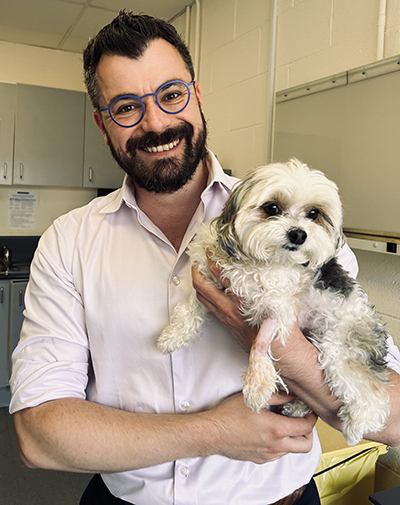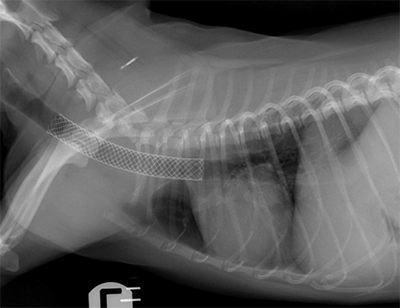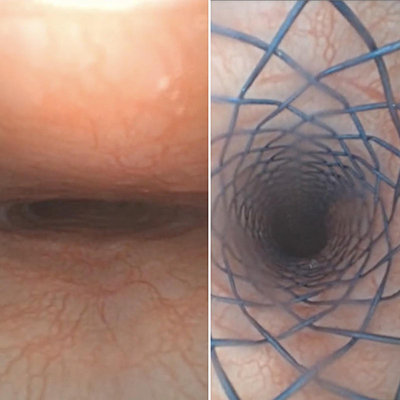Minimally Invasive Procedure: A Tracheal Stent for Coco
Coco was referred to the UCD Veterinary Hospital's Internal Medicine Service as a result of progressive respiratory issues: her trachea (windpipe) was not rigid enough and collapsed on itself leading to respiratory obstructions. As a result of this, Coco was constantly in a life threatening situation and had to be hospitalised more and more frequently for sedation and oxygen delivery.
 Coco was referred to our colleague Benoît Cuq (pictured, right), American, European (EBVS®) and RCVS Specialist in Small Animal Internal Medicine, for a minimally invasive treatment, image guided: place a scaffolding (tracheal stent) to keep Coco’s trachea open and prevent episodes of respiratory distress. After the measurements and successful placement of the device, she was discharged the following day to the care of her owners. (See below for images of the procedure and Coco's windpipe after the stent placement)
Coco was referred to our colleague Benoît Cuq (pictured, right), American, European (EBVS®) and RCVS Specialist in Small Animal Internal Medicine, for a minimally invasive treatment, image guided: place a scaffolding (tracheal stent) to keep Coco’s trachea open and prevent episodes of respiratory distress. After the measurements and successful placement of the device, she was discharged the following day to the care of her owners. (See below for images of the procedure and Coco's windpipe after the stent placement)
Dogs with tracheal collapse require lifelong medication to manage the cough associated with their condition, even after stent placement. However, the stent allows less worry for owners of a respiratory obstruction and life threatening emergency developing. Medical and environmental management are the first steps in controlling this disease, however, in life threatening cases like Coco, stenting can be an option. Minimally invasive techniques offer a pain free and safe method for interventions in natural organ cavities.
For more information on services offered at the UCD Veterinary Hospital, please see our Small Animal Internal Medicine page:
https://www.ucd.ie/vthweb/ourservices/smallanimalinternalmedicine/

Image 1: Placement of the tracheal stent

Image 2: Coco's windpipe before (left) and after (right) the stent placement